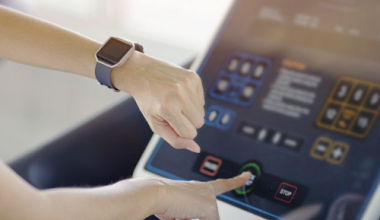Augmented reality has created quite a ring which has left the users wondering how the technology Most of the smartphone users, augmented reality will definitely change a lot for them and allow users to experience a different reality based on personal needs and desires.
Augmented reality will powerfully impact with society and the fields of marketing and advertising will explode with this latest technology. The new mobile applications being advanced will offer facial recognition software that will gain momentum very quickly.
Augmented reality (AR) is a sort of interactive, reality-based display environment that takes the competencies of computer-generated display, sound, text and effects to augment the user’s real-world experience. Augmented reality synthesizes real and computer-based scenes and images to deliver a unified but enhanced view of the world.
Augmented reality has many different implementation models and applications, but its primary objective is to provide a rich audio visual experience. AR works by employing computerized simulation and techniques such as image and speech recognition, animation, head-mounted and hand-held devices and powered display environments to enhance a virtual display on top of real images and surroundings.
Sketch Of Augmented Reality
To somewhat extend, augmented reality was first invented by a cinematographer called Morton Heilig in 1957. He founded the Sensorama which delivered visuals, sounds, vibration and smell to the viewer. Obviously, it wasn’t computer controlled but it was the first example of an endeavor at adding extra data to an experience.
The first perfectly functioning AR system was the one developed at USAF Armstrong’s Research Lab by Louis Rosenberg in 1992. This was called Virtual Fixtures and was an extremely complex robotic system which was intended to compensate for the lack of high-speed 3D graphics processing power in the early 90s.
The first marketable application of AR technology was the yellow “first down” line that initiated appearing in televised football games in 1998. In the past decade, numerous labs and companies have constructed devices that give us augmented reality. In 2009, the MIT Media Lab’s Fluid Interfaces Group presented SixthSense, a device that synthesized the use of a camera, small projector, smartphone and mirror. The device hangs from the user’s chest in a cord fashion from the neck. Four sensor devices on the user’s fingers can be used to operate the images projected by SixthSense.
Moving augmented reality to a more wearable interface, Google rolled out Google Glass in 2013. It displays on the user’s lens screen via a small projector and responds to voice commands, covering images, videos and sounds onto the screen. AR technology allows simplified surgeries, offering safe environments and good experience for patients reducing any medical profile that may arise during and after the surgery. In fact, Google Glass was not only an app but also used in the medical field effectively. Google withdrawn Google Glass at the end of December 2015.
One of the most popular means AR has intruded day to day life is through mobile games. In 2016, “Pokémon Go” an Augmented Reality game became a sensation globally, with over 100 million downloads according to CNET. It concluded up making more than $2 billion. The game let users to see Pokémon characters bouncing around in their own town. The goal was to capture pocket monsters, and use them to battle others, locally, in AR gyms.
In 2018, a mobile AR game named “Harry Potter: Hogwarts Mystery” became worldwide sensation. The game not only entertain the users but also allowed them see the Hogwarts around them while having the ability to cast spells, use potions and to learn from Hogwarts teachers. As of now, the game has around 10 million downloads in the Google Play store.
The Forthcoming Years Of Augmented Reality
Augmented Reality (AR) is quickly becoming one of the hottest trends in the world and industries, recognized as a creative and innovative way of increasing engagement. It’s a great thing to be a technology enthusiast. AR has an almost limitless potential and power.
Researchers stated that in future phones and tablets will not be the only venue for AR. Research continues swiftly on including AR functionality in contact lenses, and other wearable devices. The crucial goal of augmented reality is to build a convenient and natural involvement, so there’s a sense that phones and tablets will get replaced, but it’s not sure what those replacements will be. Even glasses will also take on a new form, as “smart glasses” are developed for blind people.
By 2025 the healthcare revenue from augmented and virtual reality will be around $5 billion and some technology insiders expect to see the most advancements of AR technology in the healthcare domain. Already there is AR at work in hospitals and doctor’s offices. By using the Accuvein scanner projects where valves and veins are so that healthcare professionals can easily find a vein for IV placement.
The travel industry also has a lot to gain from the AR boom as 84% of consumers all over the world would be interested in using AR as part of their travel experiences and 42% believe that AR is the future of tourism.
Educational platforms are the most underlined sector in AR technology. AR tools are used to develop 3D images, study the universe, or recreate historical events. The opportunities are as extensive as the technology. The pilot studies of using augmented reality in classrooms to present the deeper understanding of a topic have been successful so far. The text and images will turn to more attractive features by integrating Augmented Reality.
Industrial, military and medical applications can excellently use Augmented Reality in the validation of the plans and designs. Instead of a 2D blueprint of the map, soldiers can use a detailed 3D map to plan their mode of attack. In fact even doctors and medical facilitators can use AR to supplement live information that is crucial to the patient’s body, during a surgery.
Conclusion
The impacts of augmented reality is boundless and will move every field and industry vertical. In the Forthcoming years it will be used by everyone including professionals and consumers. It will also become a significant tool for educational purposes in classrooms around the world.
Augmented reality will change the way user’s involvement and will develop the retailers’ abilities to interact with the users. AR absolutely offers endless promises and when combined with a mobile device technology, it will prove to be very powerful. AR will let for geo-tracking that will allow amazing experiences for consumers.
Want to develop your Augmented Reality app? With 18 years of experience of developing mobile apps we, Fusion Informatics are ready to take any challenge to make the best use of our talent for your business. No doubt, Augmented Reality apps improve business processes and increase worker productivity. Get in touch with us ‘Fusion Informatics’ for a better outcome at affordable cost. We are counted at top in the list of mobile application development companies in Bangalore, India. Our services also crossed over to other major cities of India such as Mumbai, Gujarat, and so on. Contact us today and entitle a best deal!
Fill out the request form or drop us your app project inquiry at [email protected]. You can also call us . We are in a click away!





1 comment